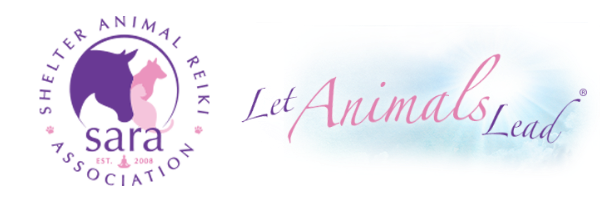One of the things that we as animal Reiki practitioners sometimes forget is that the people who care for the animals in the shelters in which we practice sometimes need Reiki as much or more than the animals do. Having been in animal rescue in one form or another for about 15 years now, I’ve seen many rescue people burn out from the overwhelming nature of the task. The same syndrome occurs in shelter staff and volunteers.
This was brought home to me recently when one of the people I’d trained in Reiki at AID had a very difficult time with the passing of one of her charges. The dog crashed suddenly and was rushed to the vet, where she went into cardiac arrest and was unable to be revived. A necropsy showed massive internal problems so she would not have lived long even if she had been revived.
One thing that made her transition so difficult for my student was that no one had seen it coming despite the dog’s age and a recent trip to the vet for another incident. More importantly for her, my student told me that during the 36 hours or so that she cared for the dog during this crisis, she “forgot Reiki.” It dawned on her after the dog made her transition that she’d simply forgotten to offer her Reiki. This combined with the shock of the dog’s unexpected passing really knocked her for a loop.
We had a conversation about the incident and her distress over it during which I silently offered her Reiki. I asked her why she thought it had upset her to that degree and she replied “Maybe I could have done more.”
I knew the answer before she spoke, but wanted her to come to that realization on her own. I told her that she didn’t need to worry about turning Reiki on and off, that she being Level 2 now is Reiki and flowing Reiki all the time. Had the dog wanted more Reiki, it would have been drawn from her to the degree where she would have noticed it.
I explained that we have all been through that sort of “maybe I could have done more” or “I could have done it better or differently” remorse. It’s the nature of healers to want to see those with whom they share their healing to heal on a physical level. What we need to remember is that we can only offer healing. It’s up to the recipient to do with it what is for their highest good.
One of the many beautiful things about Reiki is that it heals on levels other than the physical. Most of us don’t have the ability to see the healing take place on those non-physical levels, so we simply have to trust Reiki and know that what we have offered has been used for the highest good. In the same way, we honor the recipient’s free will to remain physically focused or not.
I think all of us when we first began learning and practicing Reiki wanted to be able to cause healing to happen. Especially those of us raised in Western culture where medicine is believed to cause healing. It’s a major paradigm shift to go from the notion of “zapping” beings with Reiki to make them better to offering Reiki and allowing them to do with it what they wish.
It’s especially difficult for practitioners like my student who had a good deal of success early on with their Reiki, “success” being defined as having outcomes that matched her expectations. To paraphrase an old adage, one doesn’t learn from success, it’s failure that carries the real lessons. This outcome (the dog made her transition) was perceived as a failure by my student, even though it was not by any means a failure on her part.
It’s easy to see how she could fall into a negative spiral from thinking this way. I simply reminded her of what we’d discussed in her Reiki 2 class about how the animals are sentient beings in control of their own lives and we don’t get a vote as to whether they choose to heal on a physical level or not.
I also gave her what I call the “Mantra of the Rescuer”:
All you can do is all you can do, and all you can do is enough.
I don’t know who first said that. I read it long ago and it has been a touchstone in my life when I’ve felt overwhelmed by seemingly insurmountable obstacles in my path. It fits well with the Reiki philosophy, in my view, and is completely appropriate for shelter or rescue personnel as they deal with the never-ending stream of animals needing their help.

Leave a Reply